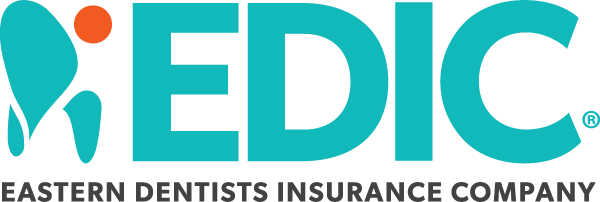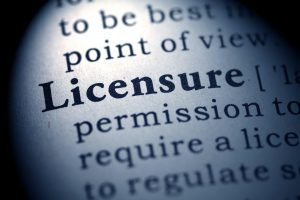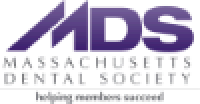Licensure Without Borders
Getting a license to practice dentistry is an exciting point in our lives, but it is also tainted by a process that many students have already heard about: live patient examinations. In addition to the ethical implications of using live patients in a single-treatment case, licensing exams are notorious for failing students based on factors out of the students’ control such as patients showing up late, having a lesion that is “too big”, not having enough subgingival calculus, and the list goes on and on. But another drawback to the current method of licensure that is often overshadowed by these conversations is the lack of a universally accepted exam.
The “portability” of these exams is an interesting issue. Each exam has many parallels to the others, yet completing the exact same procedures for the Massachusetts exam will not be accepted to confirm an individual’s competence in Georgia. Having just completed the Central Regional Dental Testing Services (CRDTS) exam to practice in Georgia after graduation, my eyes have been opened to the concerns associated with the lack of a universally accepted exam. Bear with me as I run through the sequence of events that illuminated this “other” concern with dental licensing exams.
The first hurdle I faced was a relatively small one: establishing contacts with the exam agency since it is not offered through (or even remotely close to) my school. With so much money and time being spent on this step of my career, I knew simply signing up was not going to cut it. Friends at schools that offered CRDTS were my first contacts, followed by asking lots of logistical questions to the agency staff itself. This was all prior to signing up to make sure things wouldn’t have to be shuffled too much.
After registering for my exam, it was time to use past networking to get help finding patients for the exam. I would be taking the exam in Birmingham, Alabama while I was originally from an Atlanta, Georgia suburb but attending school in Boston, Massachusetts. This meant very little overlap of patient possibilities with the exam site. The problem quickly became finding patients within range of my exam at that specific time.
As I practiced in my school’s clinic and simulation lab during the weeks leading up to my exam, a dentist from my hometown found a prospective patient that was highly motivated and agreed to go to the exam. This patient would cover my restorative requirements for the exams and took a lot of stress out of the picture. At just two weeks out from the exam, however, I could not reach the patient, and panic set in. I rescheduled any school patients I had the following week and flew down to Georgia to screen patients. Finding patients with the exact requirements of the exam that would be able to travel hours away for an all-day dental procedure seemed like a shot in the dark, but I was destined for failure if I didn’t try.
This was a point where I consider myself lucky amidst overwhelming stress. I have an extremely kind network of dentists near my hometown that all stepped up and opened their doors for me to bring family, friends, friends of friends, and even strangers in for screening. I could not imagine how tough it would be trying to move to a state where I didn’t already have a strong network of colleagues! Thanks to this network, I found three patients to cover all the requirements of the exam (one patient was confirmed two hours before my first day of examination!).
Georgia, like several states, only accepts a single exam. Since CRDTS is not accepted very broadly, there are large regions in the United States that do not offer this exam. Because of this, showing up to the exam revealed that I was not the only hopeful Georgian dentist there to take the exam from far away. Dentists practicing in New York were there with patients they had flown in from their practice. Dental students from the Northeast had hired “patient finding services” from California that added extreme prices to an already costly package of travel and exam expenses. The crowd was swimming with dozens of stressful horror stories, including some patients that did not show up as the exam day went on.
The exam itself was not anything different than what it was known to be (for better or for worse), but our profession is doing a tremendous disservice to incoming dentists by having borders to licensure drawn throughout the country. More importantly, I abhor the idea that I screened a patient for a single visit in a state that I cannot provide follow-up care for myself until my license processes in mid to late July. Because of state membership in different exam agencies, my exam required establishing incomplete, exclusive care. During my time at Boston University, complete, holistic and comprehensive care is something stressed before we even set foot into the clinic. Does our process to qualify individuals for dentistry contradict the very education we received to enter this professional field?
Despite conflicting views on the live patient examinations, dentistry as a whole needs to find common ground in licensure reform that puts our patients first. This exam is a critical moment in a developing dentist’s career, so making it accurate should only be as important as making it ethical. The borders of licensure are not jurisdictions. They’re barriers. With dozens (if not hundreds) of candidates being subjected to long-distance patient exams, these barriers are affecting a large group of future dentists and patients. It’s time we recognize that reciprocity of examination agencies deserves to be in the licensure reform conversation to eliminate moral divergences with patients and to make licensure for out-of-state students a more viable option.
After-note: For anyone trying to take an exam in another location I have a quick organizational suggestion to ensure a successful exam day:
- Read exact requirements for the exam so you know what to look for!
- Reach out to people taking the exam at their school or that have taken it recently.
- Reach out to the exam agency and apply for a date once you’re ready.
- Network with dentists near the exam location. A future/potential employer is a great place to start. If they offer to screen for you, great. If not, ask if you can use a space for screening yourself (checking laws in each state for what you’re allowed to do yourself and possibly paying a bay “rental” fee if the office has never met you). Now network possible patients for the dates of the screening. Coming from experience, I do not recommend screening right before the exam. It is unnecessary stress.
- Document everything! Print copies of anything digital, keep insurance policies with your confirmation letter, and organize these documents to have them all easily accessible for the exam. I even saw one student with brief summaries of each procedure, including examiner checkpoints to help review for test day!
- Get paperwork completed by your patients before the exam weekend if possible. Have x-rays stored with these consents/health history forms. Make sure x-rays have dates and patient name on the image. It can’t be a random picture!
- Set up accommodations for you AND your patient. Do not trust a patient to show up on a weekend at 7:30AM if they’re driving any measurable distance. Get them a hotel right next door so they’ve got no excuse. Get yourself a nice place to unwind as well. A friend’s couch can cut costs, but only if you don’t have to pay a retake fee because you didn’t sleep well.
- Set up an agenda and budget for the weekend. Both should be tentative and adaptable, but it prevents surprises out of left field.
- Roll with the punches! “Go with the flow” is too relaxed of a saying for the weekend, but just know that you have to get through a little over 48hrs of critique and then will be free once it’s all said and done!


